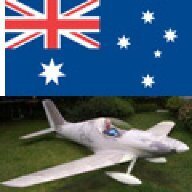As stated in the video and elsewhere, rudder is generally used to balance the adverse yaw caused by the ailerons.
But consider this, when you roll into a turn, you only need hold aileron until the desired angle of bank is achieved.
Once banked, the ailerons come back close to central (varies with aircraft), this means you only needed the rudder to co-ordinate while rolling in, once rolled the rudder should also return close to centred.
Here's a clue, if you find you are holding aileron out of the turn because the aircraft feels like it wants to roll in further, you're probably still holding a bit of rudder (ball out of the turn),
Another point to consider, when rolling back OUT of the turn, you will often need more rudder to co-ordinate than you used to go in.
This is generally because while in the turn you are holding a bit of back stick, which gives a higher angle of attack, which exaggerates the adverse yaw when rolling out.
To roll out, I tend to teach leading with rudder (once again varies with aircraft) followed by applying aileron and lowering the nose at the same time.
'Rolling on a point' is a good exercise, difficult to perfect (practice etc) and will show that you need to vary rudder inputs to achieve a balanced roll, usually a strong input to begin reversing a roll but easing off as the aircraft comes past level.
Other rudder things to watch would be variations of amount of rudder needed depending on power setting at the time.
At full power and in climb, you will need to be holding a bit of rudder to keep the ball central, if you do a turn while climbing it may be a case of not applying rudder in the direction of the turn, but more an easing OFF of the power rudder to allow the turn.
ie; If flying a Jab or 912 powered tractor (pulling, not pushing) aircraft, you will be holding a bit of right rudder to stay straight.
If you then go into a typical LEFT circuit turn, you may only need to ease off the right rudder while rolling to stay balanced.
Just remember when you get to the base turn with reduced power (idle if you're with me!) then you will need left rudder to co-ordinate.
Arthur.









